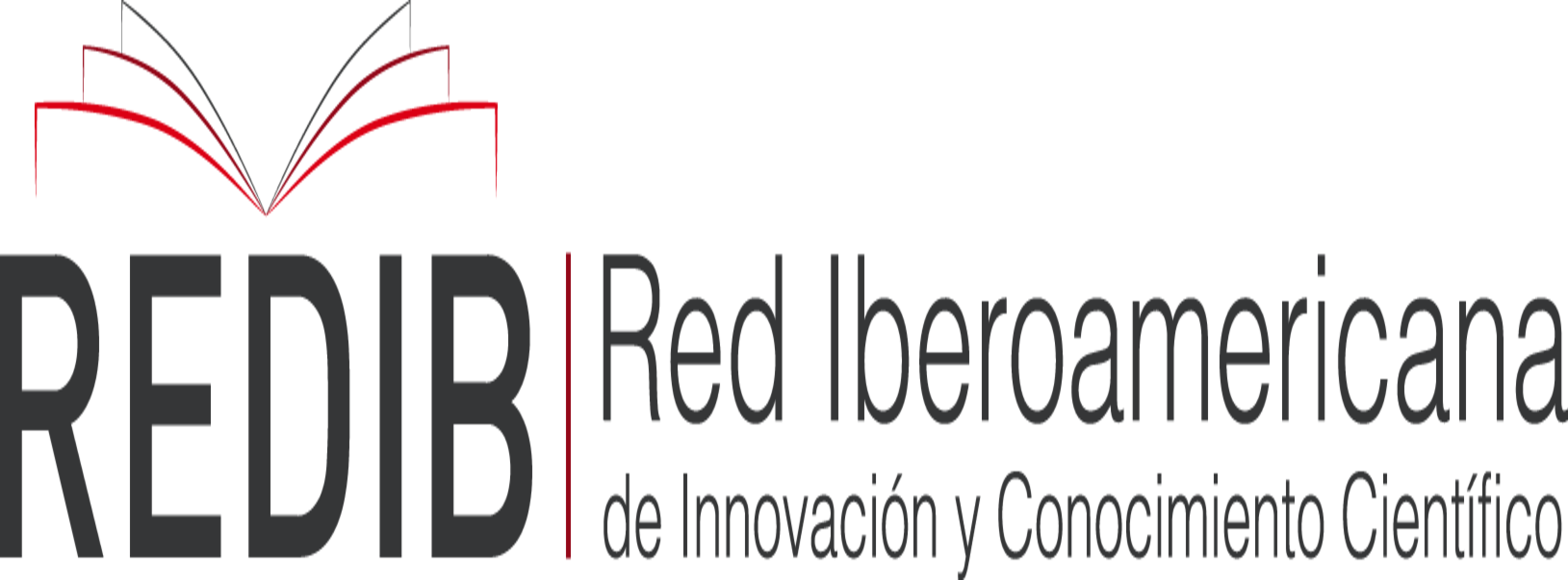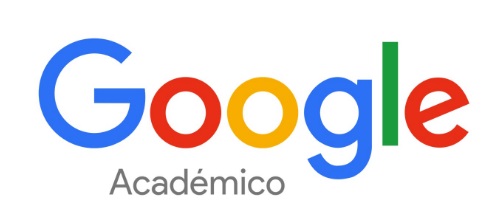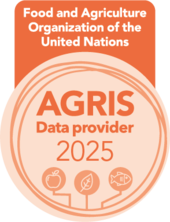Residuos de curtiembre y alternativas de aprovechamiento: Una revisión con enfoque bibliométrico
DOI:
https://doi.org/10.57188/manglar.2025.021Palabras clave:
Economía circular, grasa, biocombustibles, colágeno, hidrogelesResumen
La presente investigación aborda alternativas para aprovechar los desechos sólidos producidos en la industria del cuero, enfocándose en la economía circular y la sostenibilidad. A través de una revisión exhaustiva de literatura científica y un análisis bibliométrico, se identificó un aumento significativo en la producción científica durante el 2011 y 2024, especialmente en el área de gestión y valorización de residuos, que abarca el 36 % de los artículos analizados. India lidera los rankings de publicaciones en volumen e impacto, por su enfoque en resolver problemas críticos de interés global, mientras que Brasil resalta por el alto promedio de citas de sus investigaciones. El mapeo de co-ocurrencia identificó tres clústeres, enfocado en los procesos bioquímicos y propiedades del cuero, impacto de los residuos y el tratamiento de los efluentes. El colágeno y grasa extraída de las carnazas y recortes de piel mediante procesos de hidrolisis y extracción asistida, se aprovechan para la obtención de biocombustibles, jabones e hidrogeles. También, se pueden obtener recurtidores, queratina, absorbentes, compost y biocarbón, a partir de los demás residuos sólidos generados en las curtiembres. Este estudio sugiere orientar futuras investigaciones hacia la valorización de residuos de curtiduría con aplicaciones en biomedicina e industria alimentaria, como biopelículas, matrices para tejidos y recubrimientos comestibles, así como en tecnologías ambientales basadas en biosorbentes, todo ello bajo un enfoque de sostenibilidad y economía circular.
Descargas
Referencias
Aathika A. R, S., Kubendran, D., Yuvarani, M., Thiruselvi, D., Amudha, T., Karthik, P., & Sivanesan, S. (2018). Enhanced biohydrogen production from leather fleshing waste co-digested with tannery treatment plant sludge using anaerobic hydrogenic batch reactor. Energy Sources, Part A: Recovery, Utilization, and Environmental Effects, 40(5), 586-593. https://doi.org/10.1080/15567036.2018.1435754
Abul Hashem, Md., & Shahruk Nur-A-Tomal, Md. (2017). Valorization of Tannery Limed Fleshings Through Fat Extraction: An Approach to Utilize By-Product. Waste and Biomass Valorization, 8(4), 1219-1224. https://doi.org/10.1007/s12649-016-9705-z
Bekele, W. W. (2023). Utilization of Tannery Flesh Waste for Production of Sustainable Leather Coating Substance. Textile & Leather Review, 6, 114-131. https://doi.org/10.31881/TLR.2023.008
Bonilla-Espadas, M., Zafrilla, B., Lifante-Martínez, I., Camacho, M., Orgilés-Calpena, E., Arán-Aís, F., Bertazzo, M., & Bonete, M. (2024). Selective isolation and identification of microorganisms with dual capabilities: Leather biodegradation and heavy metal resistance for industrial applications. Microorganisms, 12(5), 1029. https://doi.org/10.3390/microorganisms12051029
Bragança, I., Crispim, A., Sampaio, A., Ramalho, E., Crispim, F., Caetano, N. S., & Silva, P. C. (2013). Adding value to tannery fleshings: Part I - Oils and protein hydrolysates - Production and application. Journal of the Society of Leather Technologists and Chemists, 97(2), 62-67.
Cunha, A. F., Caetano, N. S., Ramalho, E., & Crispim, A. (2020). Fat extraction from fleshings—Optimization of operating conditions. Energy Reports, 6, 381-390. https://doi.org/10.1016/j.egyr.2020.11.176
De Souza, F. D. R., Benvenuti, J., Meyer, M., Wulf, H., Klüver, E., & Gutterres, M. (2022). Extraction of keratin from unhairing of bovine hide. Chemical Engineering Communications, 209(1), 118-126. https://doi.org/10.1080/00986445.2020.1842740
Devaraj, K., Aathika, S., Mani, Y., Thanarasu, A., Periyasamy, K., Periyaraman, P., Velayutham, K., & Subramanian, S. (2018). Experimental investigation on cleaner process of enhanced fat-oil extraction from alkaline leather fleshing waste. Journal of Cleaner Production, 175, 1-7. https://doi.org/10.1016/j.jclepro.2017.11.089
Fathima, N., Rao, R., & Nair, B. U. (2012). Tannery solid waste to treat toxic liquid wastes: A new holistic paradigm. Environmental Engineering Science, 29(6), 363-372. https://doi.org/10.1089/ees.2010.0445
Hashem, Md. A., Hasan, M., Hasan, Md. A., Sahen, Md. S., Payel, S., Mizan, A., & Nur-A-Tomal, Md. S. (2023). Composting of limed fleshings generated in a tannery: Sustainable waste management. Environmental Science and Pollution Research, 30(13), 39029-39041. https://doi.org/10.1007/s11356-022-25070-6
Hu, J., Xiao, Z., Zhou, R., Deng, W., Wang, M., & Ma, S. (2011). Ecological utilization of leather tannery waste with circular economy model. Journal of Cleaner Production, 19(2), 221-228. https://doi.org/10.1016/j.jclepro.2010.09.018
Hussien, M., Ramadass, satiesh kumar, Madhan, B., & Rao, J. (2017). Enzymatic Hydrolysis of Limed Trimmings: Preparation, Characterization and Application of Collagen Hydrolysate. Journal American Leather Chemists Association, 112, 44-51.
Kubendran, D., Salma Aathika, A. R., Amudha, T., Thiruselvi, D., Yuvarani, M., & Sivanesan, S. (2017). Utilization of leather fleshing waste as a feedstock for sustainable biodiesel production. Energy Sources, Part A: Recovery, Utilization, and Environmental Effects, 1-7. https://doi.org/10.1080/15567036.2017.1349218
Kuligowski, K., Cenian, A., Konkol, I., Świerczek, L., Chojnacka, K., Izydorczyk, G., Skrzypczak, D., & Bandrów, P. (2023). Application of leather waste fractions and their biochars as organic fertilisers for ryegrass growth: Agri-environmental aspects and plants response modelling. Energies, 16(9), 3883. https://doi.org/10.3390/en16093883
Li, Y., Guo, R., Lu, W., & Zhu, D. (2019). Research progress on resource utilization of leather solid waste. Journal of Leather Science and Engineering, 1(1), 6. https://doi.org/10.1186/s42825-019-0008-6
Linda, L. M. F., Ponce, S. C. G., Jara, D. A. H., & Cabezas, N. T. M. (2025). Application of activated carbon from cabuya negra (Agave americana L.) for diuron adsorption in aqueous solutions: A sustainable alternative for wastewater treatment. Salud Ciencia y Tecnología - Serie de Conferencias, 4, 1475. https://doi.org/10.56294/sctconf20251475
Luo, F., Liu, Z., Zhou, P., Wang, S., He, L., Wu, Y., Du, L., Jiao, M., Liao, Z., & Chen, Z. (2024). Extraction of collagen from bovine tannery solid waste preserving original conformation via radical initiation and hydrogen bond reformation. Green Chemistry, 26(16), 9195-9208. https://doi.org/10.1039/D4GC02634A
Mahmood Ali, A., Khan, A., Shahbaz, M., Imtiaz Rashid, M., Imran, M., Shahzad, K., & Binti Mahpudz, A. (2023). A renewable and sustainable framework for clean fuel towards circular economy for solid waste generation in leather tanneries. Fuel, 351, 128962. https://doi.org/10.1016/j.fuel.2023.128962
Masilamani, D., Madhan, B., Shanmugam, G., Palanivel, S., & Narayan, B. (2016). Extraction of collagen from raw trimming wastes of tannery: A waste to wealth approach. Journal of Cleaner Production, 113, 338-344. https://doi.org/10.1016/j.jclepro.2015.11.087
Mekuria, A. (2024). Development, characterization, and optimization of sulfated fat liquor from fleshing tannery solid waste. Cogent Food & Agriculture, 10(1), 2406600. https://doi.org/10.1080/23311932.2024.2406600
Mengistu, A., Angassa, K., Tessema, I., Andualem, G., Yiheyes, B., Berhane, D., Abewaa, M., Kassie, M., & Telay, B. (2024). Keratin hydrolysate as a chrome exhaust aid and keratin filler in leather processing: A cleaner technology approach for tannery solid waste management and leather manufacturing. Heliyon, 10(13), e34049. https://doi.org/10.1016/j.heliyon.2024.e34049
Mikula, K., Konieczka, M., Taf, R., Skrzypczak, D., Izydorczyk, G., Moustakas, K., Kułażyński, M., Chojnacka, K., & Witek-Krowiak, A. (2022). Tannery waste as a renewable source of nitrogen for production of multicomponent fertilizers with biostimulating properties. Environmental Science and Pollution Research, 30(4), 8759-8777. https://doi.org/10.1007/s11356-022-20621-3
Moktadir, Md. A., Ren, J., & Zhou, J. (2023). A systematic review on tannery sludge to energy route: Current practices, impacts, strategies, and future directions. Science of The Total Environment, 901, 166244. https://doi.org/10.1016/j.scitotenv.2023.166244
Mozhiarasi, V., Natarajan, T. S., Karthik, V., & Anburajan, P. (2023). Potential of biofuel production from leather solid wastes: Indian scenario. Environmental Science and Pollution Research, 30(60), 125214-125237. https://doi.org/10.1007/s11356-023-28617-3
Muralidharan, V., Gochhayat, S., Palanivel, S., & Madhan, B. (2022). Influence of preparation techniques of cellulose II nanocrystals as reinforcement for tannery solid waste–based gelatin composite films. Environmental Science and Pollution Research, 30(6), 14284-14303. https://doi.org/10.1007/s11356-022-23058-w
Ocak, B. (2021). Chitosan/Collagen Hydrolysate Based Films Obtained from Hide Trimming Wastes Reinforced with Chitosan Nanoparticles. Food Biophysics, 16(3), 381-394. https://doi.org/10.1007/s11483-021-09678-8
Omoloso, O., Mortimer, K., Wise, W. R., & Jraisat, L. (2021). Sustainability research in the leather industry: A critical review of progress and opportunities for future research. Journal of Cleaner Production, 285, 125441. https://doi.org/10.1016/j.jclepro.2020.125441
Onem, E., Heil, V., Yesil, H., Prokein, M., & Renner, M. (2024). Hydrocarbon fuel blendstock from tannery waste: Energy from fleshing oil via gas phase catalytic cracking. Biofuels, Bioproducts and Biorefining, 18(5), 1423-1436. https://doi.org/10.1002/bbb.2632
Ongarora, B. G., Wainaina, P. N., & Tanui, P. (2019). Extraction of Oil from Tannery Fleshings for Chamois Leather Tanning. https://repository.dkut.ac.ke:8080/xmlui/handle/123456789/990
Organización de las Naciones Unidas para la Alimentación y la Agricultura. (2023). Comercio de cueros y pieles y medio ambiente. https://www.fao.org/unfao/bodies/ccp/hs/98/w9790s.htm
Paul, A. C., Uddin, Md. E., Layek, R. K., & Saha, T. (2023). Investigation on mechanical, gas barrier, and biodegradation properties of graphene oxide reinforced bovine trimmings derived collagen biocomposite. Polymers for Advanced Technologies, 34(10), 3317-3332. https://doi.org/10.1002/pat.6142
Pérez-Limiñana, M. A., Sánchez-Navarro, M. M., Escoto-Palacios, M. J., Arán-Aís, F., & Orgilés-Barceló, C. (2016). Influence of the Extraction Temperature on the Properties of Biopolymers Obtained from Tannery Wastes. Journal of Renewable Materials, 4(1), 3-8. https://doi.org/10.7569/JRM.2015.634119
Pietrelli, L., Ferro, S., Reverberi, A. P., & Vocciante, M. (2020). Removal and recovery of heavy metals from tannery sludge subjected to plasma pyro-gasification process. Journal of Cleaner Production, 273, 123166. https://doi.org/10.1016/j.jclepro.2020.123166
Puhazhselvan, P., Pandi, A., Sujiritha, P. B., Antony, G. S., Jaisankar, S. N., Ayyadurai, N., Saravanan, P., & Kamini, N. R. (2022). Recycling of tannery fleshing waste by a two step process for preparation of retanning agent. Process Safety and Environmental Protection, 157, 59-67. https://doi.org/10.1016/j.psep.2021.11.003
Ramya, K. R., Sathish, M., Madhan, B., Jaisankar, S. N., & Saravanan, P. (2022). Effective utilization of tannery hair waste to develop a high-performing re-tanning agent for cleaner leather manufacturing. Journal of Environmental Management, 302, 114029. https://doi.org/10.1016/j.jenvman.2021.114029
Ravindran, B., Contreras-Ramos, S. M., & Sekaran, G. (2015). Changes in earthworm gut associated enzymes and microbial diversity on the treatment of fermented tannery waste using epigeic earthworm Eudrilus eugeniae. Ecological Engineering, 74, 394-401. https://doi.org/10.1016/j.ecoleng.2014.10.014
Rigueto, C. V. T., Rosseto, M., Nazari, M. T., Ostwald, B. E. P., Alessandretti, I., Manera, C., Piccin, J. S., & Dettmer, A. (2021). Adsorption of diclofenac sodium by composite beads prepared from tannery wastes-derived gelatin and carbon nanotubes. Journal of Environmental Chemical Engineering, 9(1), 105030. https://doi.org/10.1016/j.jece.2021.105030
Sandhya, K. V., Abinandan, S., Vedaraman, N., & Velappan, K. C. (2016). Extraction of fleshing oil from waste limed fleshings and biodiesel production. Waste Management, 48, 638-643. https://doi.org/10.1016/j.wasman.2015.09.033
Saralegui, A., Piol, M. N., Willson, V., Caracciolo, N., Ramos, S., & Boeykens, S. (2023). Bio Adsorption An Eco-friendly Alternative for Industrial Effluents Treatment. En CRC Press eBooks (pp. 40-55). https://doi.org/10.1201/9781003277941-3
Shanthi, C. babu, Banerjee, P., Babu, N. K., & Rajakumar, G. (2013). Recovery and characterization of protein hydrolysate from chrome shavings by microbial degradation. Journal of the American Leather Chemists Association, 108, 231-239.
Skrzypczak, D., Szopa, D., Mikula, K., Izydorczyk, G., Baśladyńska, S., Hoppe, V., Pstrowska, K., Wzorek, Z., Kominko, H., Kułażyński, M., Moustakas, K., Chojnacka, K., & Witek – Krowiak, A. (2022). Tannery waste-derived biochar as a carrier of micronutrients essential to plants. Chemosphere, 294, 133720. https://doi.org/10.1016/j.chemosphere.2022.133720
Song, J., Li, Y., Wang, Y., Zhong, L., Liu, Y., Sun, X., He, B., Li, Y., & Cao, S. (2021). Preparing Biochars from Cow Hair Waste Produced in a Tannery for Dye Wastewater Treatment. Materials, 14(7), 1690. https://doi.org/10.3390/ma14071690
Suparno, O., Gumbira-Sa’id, E., Kartika, I., & Amwaliya, S. (2012). Chamois Leather Tanning Accelerated by Oxidizing Agent. Jurnal Teknik Kimia Indonesia, 11, 9-16. https://doi.org/10.5614/jtki.2012.11.1.2
Tsamo, C., Zangue, A. H., Herbaud, E. E., & Nchang, S. T. D. (2023). Investigating the potential of using tannery process solid hair waste for spent engine and vegetable oils removal from water and toxicity assessment using maize. Case Studies in Chemical and Environmental Engineering, 8, 100412. https://doi.org/10.1016/j.cscee.2023.100412
Venkatesan, N., Krishna, A., & Fathima, N. N. (2023). Leather solid waste derived activated carbon as a potential material for various applications: A review. Journal of Analytical and Applied Pyrolysis, 176, 106249. https://doi.org/10.1016/j.jaap.2023.106249
Verma, S. K., & Sharma, P. C. (2023). Current trends in solid tannery waste management. Critical Reviews in Biotechnology, 43(5), 805-822. https://doi.org/10.1080/07388551.2022.2068996
Vučurović, D., Bajić, B., Trivunović, Z., Dodić, J., Zeljko, M., Jevtić-Mučibabić, R., & Dodić, S. (2024). Biotechnological utilization of agro-industrial residues and by-products-sustainable production of biosurfactants. Foods, 13(5), 711. https://doi.org/10.3390/foods13050711
Wainaina, P. N., Tanui, P., & Ongarora, B. (2019). Extraction of oil from tannery fleshings for chamois leather tanning. Journal of the Society of Leather Technologists and Chemists, 103(3), 159-162.
Wrzesińska-Jędrusiak, E., Czarnecki, M., Kazimierski, P., Bandrów, P., & Szufa, S. (2023). The circular economy in the management of waste from leather processing. Energies, 16(1), 564. https://doi.org/10.3390/en16010564
Yoseph, Z., Gladstone Christopher, J., Assefa Demessie, B., Tamil Selvi, A., Sreeram, K. J., & Raghava Rao, J. (2020). Extraction of elastin from tannery wastes: A cleaner technology for tannery waste management. Journal of Cleaner Production, 243, 118471. https://doi.org/10.1016/j.jclepro.2019.118471
Younas, H., Nazir, A., & Bareen, F. (2022). Application of microbe-impregnated tannery solid waste biochar in soil enhances growth performance of sunflower. Environmental Science and Pollution Research, 29(38), 57669-57687. https://doi.org/10.1007/s11356-022-19913-5
Descargas
Publicado
Número
Sección
Licencia
Derechos de autor 2025 Maycon Andrade, Alicia López, Juan Solano-Gaviño

Esta obra está bajo una licencia internacional Creative Commons Atribución 4.0.

Manglar is an open access journal distributed under the terms and conditions of Creative Commons Attribution 4.0 International license









